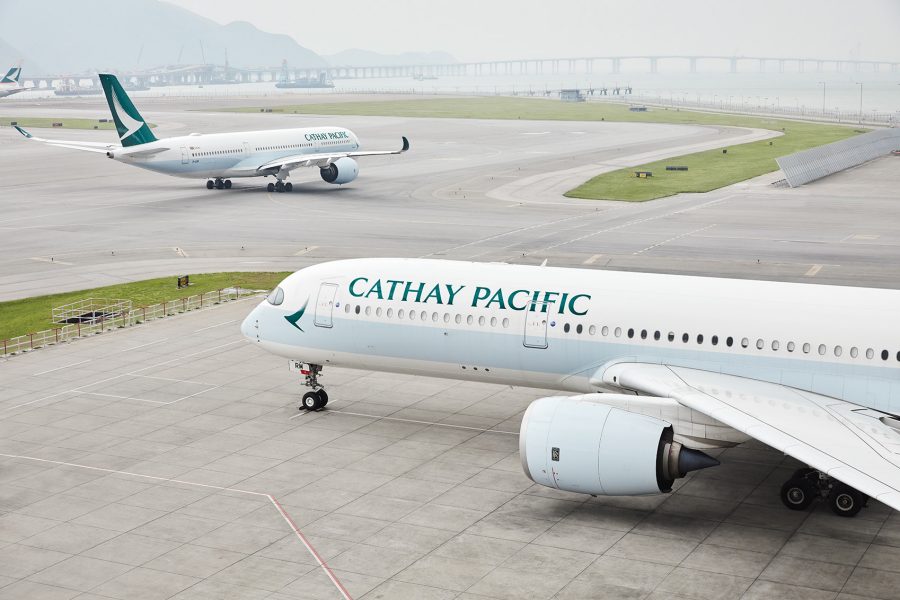Hong Kong’s Three Runway System is open for business

There’s a lot of space up there in the skies: you wouldn’t expect that running out of it would be much of a problem for aircraft. But as passenger numbers have grown, congestion has become an issue in the world of aviation.
After all, airports have a finite capacity: you can’t just deploy more aircraft if there isn’t the space to accommodate them. Many of the world’s international airports are full and have little room for growth. Airports require a lot of land, which comes at a premium – and for some, growth is all but impossible.
Not so for Hong Kong International Airport (HKIA), which unveiled its Three Runway System at the end of this year. The system sits at the heart of Hong Kong’s efforts to enhance its status as an international aviation hub in the Greater Bay Area and a key waypoint in the “Air Silk Road”. And it’s good news all round.
Somewhat confusingly, the “new” third runway has actually been in use since its completion in 2022. But the completion of the third runway enabled the now central runway to be resurfaced. While HKIA has technically had three runways for several years, it’s only now that the Three Runway System has fully come online.
At an airport with two runways, aircraft ordinarily take off and land in parallel, which makes it easier to manage the airspace around the airfield. That way, you don’t have planes taking off close to the path of landing aircraft. HKIA’s third runway opens up new capacity and far more flex for arriving and departing aircraft. Debris on the tarmac? A delayed departure leading to more delays? The third runway makes that far less of an issue.
Runway numbers, or “designators”, reflect their magnetic compass bearing rounded to nearest 10, dropping the last digit. A runway with a bearing of 74 degrees becomes 07, which is the case at HKIA for planes facing the city. In the opposite direction, the bearing changes to 25. We then add L, R and C – left, right and centre – for each of the three runways. So pilots approaching the new runway will see a giant “07L” written at the end of the tarmac – or a “25R” if they are approaching from the opposite direction.
While 07L will ordinarily be used for arrivals and 07C for departures, the existing southerly runway – 07R/25L – will be used in a mixed mode. “For aircraft that are going off to the south, from an air traffic perspective it makes logical sense to use that runway,” says Head of Line Operations Captain James Toye. Which runways are used also depends to some degree on wind direction – and also how to keep noise at a minimum for nearby residents. “The new runway, which is closest to the sea, will predominantly be used for arrivals,” says Captain Toye. “This best fits the noise profile.”
The newest runway will be the runway of choice for freighters, as it is next to the air cargo apron. That means shorter taxiing journeys, which helps with ground congestion. Passenger aircraft, on the other hand, can expect a slightly longer journey. In recent years, aircraft using 07L/25R have been able to taxi through the central runway to reach the terminal. Now this runway is in full use, aircraft will have to taxi around the far ends of 07C/25C. “We think this will add an extra five or six minutes to taxi times,” says Captain Toye.
But that’s a minor inconvenience compared to our newer, much more capable airport – fewer delays, less disruption and much more space to stretch our wings.
More inspiration
Hong Kong travel information
- China – the Chinese Mainland, Hong Kong SAR, Macao SAR and Taiwan Region
- Hong Kong SAR - English
- Chinese Mainland (China) - English
- Taiwan, China - English
- 香港特別行政區 - 繁體中文
- 中国內地 - 简体中文
- 中國台灣 - 繁體中文
- Africa
- South Africa - English
- Asia
- Bangladesh - English
- Korea - English
- Singapore - English
- Cambodia - English
- 한국 - 한국어
- Sri Lanka - English
- India - English
- Malaysia - English
- Thailand - English
- Indonesia - English
- Maldives - English
- ประเทศไทย - ภาษาไทย
- Indonesia - Bahasa Indonesia
- Myanmar - English
- Vietnam - English
- Japan - English
- Nepal - English
- Việt Nam - tiếng Việt
- 日本 - 日本語
- Philippines - English
- Australasia
- Australia - English
- New Zealand - English